Related Research Articles

Mycology is the branch of biology concerned with the study of fungi, including their taxonomy, genetics, biochemical properties, and use by humans. Fungi can be a source of tinder, food, traditional medicine, as well as entheogens, poison, and infection. Mycology branches into the field of phytopathology, the study of plant diseases. The two disciplines are closely related, because the vast majority of plant pathogens are fungi. A biologist specializing in mycology is called a mycologist.

Elias Magnus Fries was a Swedish mycologist and botanist. He is sometimes called the "Linnaeus of Mycology". In his works he described and assigned botanical names to hundreds of fungus and lichen species, many of which remain authoritative today.
David Leslie Hawksworth is a British mycologist and lichenologist currently with a professorship in the Universidad Complutense de Madrid in Madrid, Spain and also a Scientific Associate of The Natural History Museum in London. In 2002, he was honoured with an Acharius Medal by the International Association for Lichenology. He married Patricia Wiltshire, a leading forensic ecologist and palynologist in 2009. As of 2022, he is the Editor-in-Chief of the journals IMA Fungus and Biodiversity and Conservation.
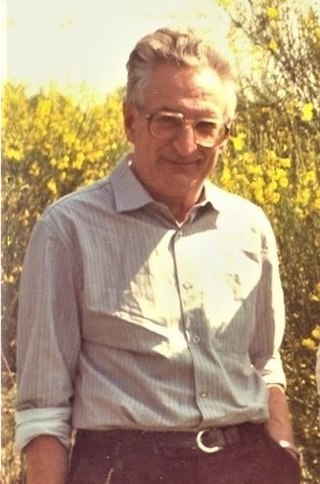
Meinhard Michael Moser was an Austrian mycologist. His work principally concerned the taxonomy, chemistry, and toxicity of the gilled mushrooms (Agaricales), especially those of the genus Cortinarius, and the ecology of ectomycorrhizal relationships. His contributions to the Kleine Kryptogamenflora von Mitteleuropa series of mycological guidebooks were well regarded and widely used. In particular, his 1953 Blätter- und Bauchpilze [The Gilled and Gasteroid Fungi ], which became known as simply "Moser", saw several editions in both the original German and in translation. Other important works included a 1960 monograph on the genus Phlegmacium and a 1975 study of members of Cortinarius, Dermocybe, and Stephanopus in South America, co-authored with the mycologist Egon Horak.

Kathleen Maisey Curtis, Lady Rigg was a New Zealand mycologist and was a founder of plant pathology in New Zealand.
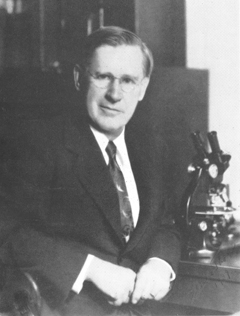
Charles Thom was an American microbiologist and mycologist. Born and raised in Illinois, he received his PhD from the University of Missouri, the first such degree awarded by that institution. He studied the microbiology of dairy products and soil fungi, and in particular researched the genera Aspergillus and Penicillium. His work influenced the establishment of standards for food handling and processing in the USA. He pioneered the use of culture media to grow microorganisms, and, with food chemist James N. Currie, developed a process to mass-produce citric acid using Aspergillus. Thom played an important role in the development of penicillin in World War II.
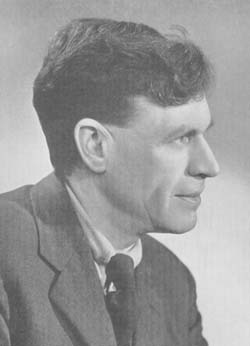
Cecil Terence Ingold CMG was "one of the most influential mycologists of the twentieth century". He was president of the British Mycological Society where he organised the first international congress of mycologists. An entire class of aquatic fungi within the Pleosporales, the Ingoldian fungi, were named after him, although recent DNA studies are changing the scientific names.
Roy Watling, PhD., DSc, FRSE, F.I.Biol., C.Biol., FLS is a Scottish mycologist who has made significant contributions to the study of fungi both in the identification of new species and correct taxonomic placement, as well as in fungal ecology.
Franz Oberwinkler was a German mycologist, specialising in the fungal morphology, ecology and phylogeny of basidiomycetes.
John Webster was an internationally renowned mycologist and head of biological sciences at the University of Exeter in England. He also served twice as president of the British Mycological Society. He is recognised for determining the physiological mechanism underpinning fungal spore release, though is probably best known by students of mycology for his influential textbook, Introduction to Fungi.

Edith Katherine Cash was an American mycologist.
Luella Kayla Weresub, Ph.D. was a world authority on the botanical nomenclature of fungi, especially corticioid fungi and sclerotium-producing basidiomycetes. She was a mycologist at the Central Experimental Farm, Ottawa, with Canada’s federal department of agriculture. Her influence on Canadian mycology and her concern with public education are recognized in the Canadian Botanical Association’s annual Luella K. Weresub lecture in Mycology and the Weresub Prize awarded for the best student paper published by a Canadian student in mycology.
Pedro Willem Crous is a South African mycologist and plant pathologist.

The Illinois Mycological Association or IMA is a group of mushroom enthusiasts, citizen scientists, foragers, and professional mycologists based in the Chicago area.
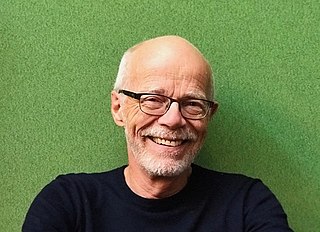
John Waldo Taylor is an American scientist who researches fungal evolution and ecology. He is professor of the graduate school in the Department of Plant and Microbial Biology at the University of California, Berkeley.
Rhoda Williams Benham was an American mycologist, taxonomist, and pioneer of the field of medical mycology. Throughout her career, she taught and trained many medical mycologists at Columbia University, while also conducting and publishing fundamental research in the field. Her most renowned works include her publications on the genus Candida, which established her as an authority on the yeast-like fungi pathogenic to man.
Stanley John Hughes (1918–2019) was a Canadian scientist who is known throughout the global field of mycology for developing and introducing a precise and meticulous system for classifying fungi that is still used today. A naturalized Canadian, he was a federal research scientist for Agriculture and Agri-Food Canada at what is today the Ottawa Research and Development Centre.
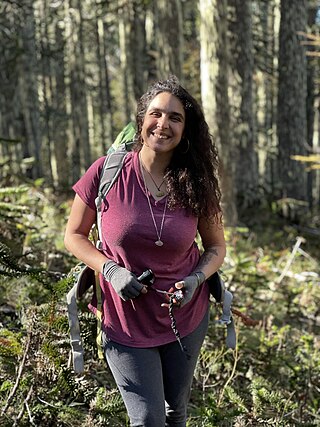
Giuliana Furci OSI is a field mycologist, speaker, author, and founder and CEO of the Fungi Foundation. She is a Harvard University associate, National Geographic Explorer, Dame of the Order of the Star of Italy, deputy chair of the IUCN Fungal Conservation Committee, and author of several titles including a series of field guides to Chilean fungi and co-author of titles such as the 1st State of the World's Fungi and the publication delimiting the term “funga” and the 3F Proposal - Fauna, Flora & Funga. Giuliana has held consulting positions in U.S. philanthropic foundations as well as full-time positions in international and Chilean marine conservation non-profits. She sits on the Board of Fundación Acción Fauna, and on the advisory board of the Society for the Protection of Underground Networks (SPUN), and other organizations. Giuliana has received several distinctions including the 2022 Buffett/National Geographic Leadership in Conservation in Latin America Award, 2022 Gordon and Tina Wasson Award from the Mycological Society of America, and the 2013 Presidents Award from the International Society for Fungal Conservation.
Amy Yarnell Rossman is an American mycologist and a leading expert in identifying fungi.
The European Mycological Association (EMA) is an organization with a broad scope encompassing all aspects of Mycology within Europe, this includes fungus-like organisms such as lichens, oomycetes and slime moulds. The Association was formed in September 2003 at the 14th Congress of European Mycologists. Over 110 delegates from around 30 countries were present and the idea of establishing a European Mycological Association received universal support. Since then the EMA has taken on the patronage of all meetings of the Congress of European Mycologists. It has also adopted the European Council for the Conservation of Fungi as its conservation body.
References
- ↑ Simmons EG. (2011). "The International Mycological Association: its history in brief with summaries of its International Mycological Congresses and diverse international relationships". IMA Fungus. 1 (1): 18–100. doi:10.5598/imafungus.2010.01.01.01. PMC 3344280 . PMID 22679567.

- ↑ van der Aa, H. A. (1993). "International Mycological Association". Coolia. 36 (1): 23–25.
- ↑ "The International Mycological Association". International Mycological Association. Retrieved 22 November 2014.
- ↑ "Awards". International Mycological Association. Retrieved 8 October 2022.